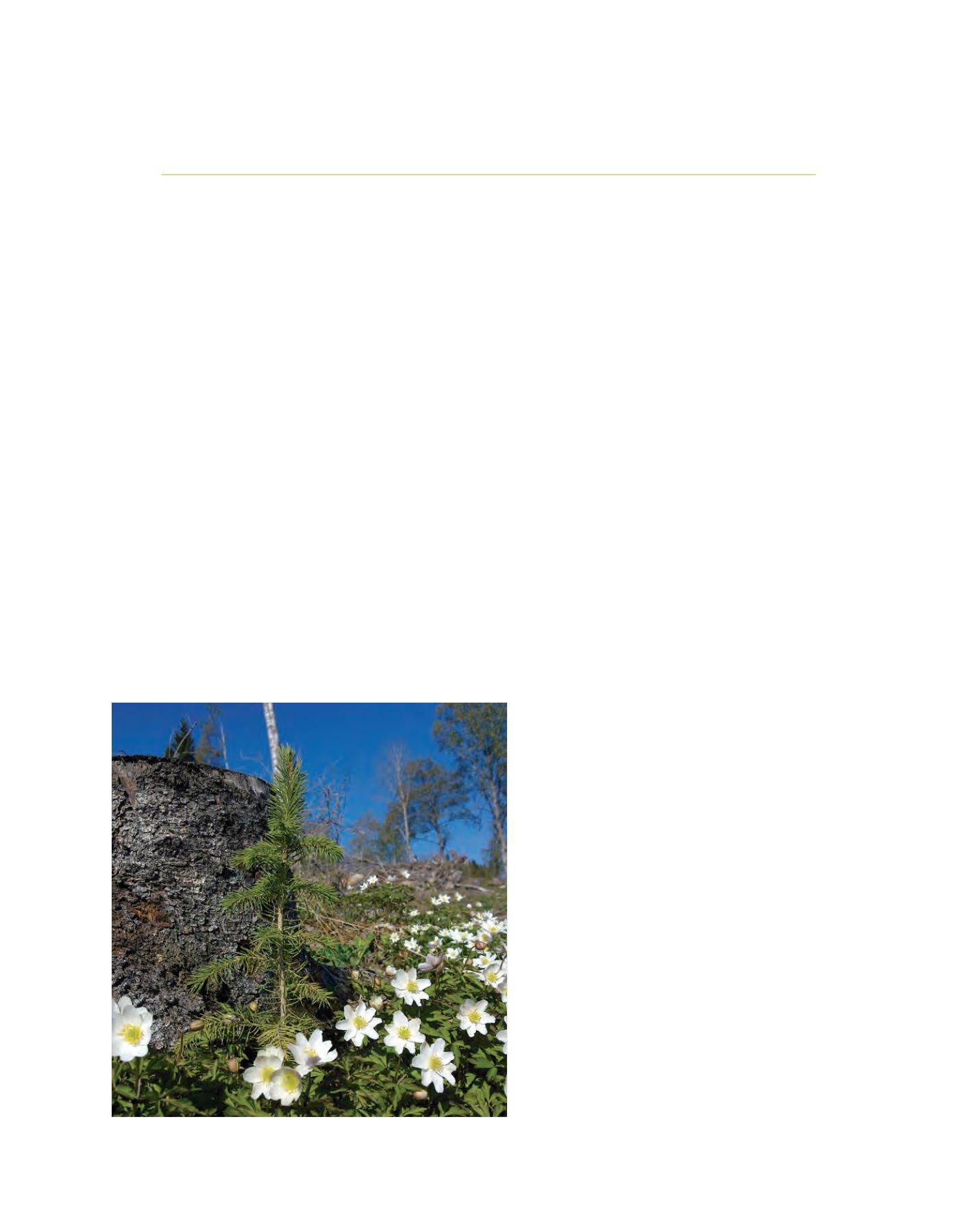

[
] 181
Norwegian forests: policy and resources
Pål Vidar Sollie, Director General, Department of Forest and Natural Resource Policy,
Royal Norwegian Ministry of Agriculture and Food
N
orway has considerable forest resources with 40 per cent
of the land area being forest and other wooded land. The
forest resources are of great historical importance and
have played a major role in developing trade and industry.
Norwegian forestry and the wood industry continue to have
great financial importance today, at a national, regional and local
level. The primary value of Norwegian timber in 2008 was US$535
million. In the same year timber and wood products had a gross
value of approximately US$8.6 billion, corresponding to five per
cent of the total gross domestic product in Norway.
Biomass and timber from Norwegian forests will continue to play
an important role in the years to come, as renewable resources that
can help to meet the challenges of climate change. According to the
National Forest Inventory, 8.3 million hectares of the forest area
is productive forest. The most important types of wood, measured
by volume and economic value, are spruce (
Picea abies
), Scots pine
(
Pinus silvestris
) and birch (
Betula spp
.).
In 2009 the total growing stock in Norwegian forests was 823
million m
3
, with a yearly increment of 25 million m
3
. Over the last
90 years the total annual harvest has been between 8 and 11 million
m
3
. This is considerably lower than the yearly increment. With the
existing level of timber harvest and forest management
the growing stock and its increment in 2011 is more
than twice the level documented by the first National
Forest Inventory in 1932. The amount of dead wood,
old forest and deciduous trees, which is important for
biological diversity, has increased considerably during
the same period.
Forestry in Norway is characterized by small-scale
properties, combining forestry and agriculture. This
structure is based on the Norwegian topography,
varying production conditions and the ownership
structure of Norwegian forests. In 2009 Norway had
120,000 forest owners with more than 2.5 hectares
of forest. 97 per cent of these properties are privately
owned, and constitute 80 per cent of the total produc-
tive forest area. The average size of privately owned
farms with forest resources is 45 hectares.
Policy instruments for sustainable forest
management
Norwegian forest policy is based on a wide range of
measures. These include legislation, taxation, financial
support schemes, research and advisory bodies. Norway’s
obligations under international agreements have also
been incorporated in Norwegian law. For example, the
criteria and indicators for sustainable forest management
that have been developed in the framework of forest
policy cooperation in Europe (FOREST EUROPE).
The main objectives of the Forestry Act are to
promote sustainable forest management with a view to
promote active, local and national economic develop-
ment, and to secure biological diversity, consideration
for the landscape, outdoor recreation and the cultural
values associated with the forest. The Forestry Act
applies to all categories of forest ownership.
The National Forest Inventory has been an impor-
tant basis for the development of forest policy for
every county in Norway since the beginning of the last
century.
A regulation under the Forestry Act requires forest
owners to reinvest a part of the revenue from forestry
into a Government-administrated fund, the Forest Trust
Fund. This fund was established to secure long-term
investment in sustainable forest management such as
silviculture, building and maintenance of infrastruc-
ture, forest management planning and environmental
measures. The forest owner is stimulated to use the
trust fund through tax relief.
Regeneration after felling is an important factor for sustainable forest management
Image: The Norwegian Forestry Society
















